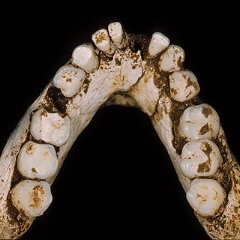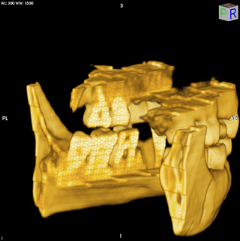
August 6, 2008

Hobbit critic Professor Teuku Jacob (above) passed away last October 17, 2007, and the critic of the new hominid species who took Jacob’s place as most outspoken is now in hot water..
Saying he sees the irony in his accusations of monetary gain for fame, one of the harshest skeptics of the claims that Homo floresiensis, the Hobbit, is a new species, biological anthropologist Maciej Henneberg has been accused of financial fraud.
The Australian in their August 7, 2008 edition, has science writer Leigh Dayton laying out the facts of the case.
The University of Adelaide researcher who accused the scientists behind the hobbit discovery of misrepresenting their find for scientific fame and monetary gain is under investigation for financial fraud.

While the university declined to name him, the head of anatomical sciences, biological anthropologist Maciej Henneberg (pictured), confirmed he had been indefinitely suspended, along with another staff member. He said it was inappropriate for the university to detail the allegations and state of the inquiry. But Professor Henneberg acknowledged that the matter concerns the misappropriation of $400,000.
A spokesman for the university confirmed that two members of staff had been indefinitely suspended, pending the outcome of an investigation involving “allegations of misconduct”.
Professor Henneberg meted out harsh criticism to members of the hobbit discovery team in The Australian on April 16 and in a recent book, The Hobbit Trap: Money, Fame, Science and the Discovery of a “New Species”.
“Yes, I see the sense of irony in this,” Henneberg agreed.
The book, co-authored with former journalist John Schofield, accuses the team — including the University of Wollongong’s Mike Morwood and Peter Brown of the University of New England — of presenting “misleading” evidence to support their claim that the hobbit, given the scientific name of Homo floresiensis, was a new-found human species that lived on the Indonesian island of Flores until about 10,000 years ago.
According to Professor Henneberg, the team pushed their “new species” claim for professional and financial gain. He contended that his view — the the hobbit is a deformed modern human who had dental work — had been unfairly criticised by scientists with a vested interest.
“Unfortunately, what matters most these days is money, even in scientific discussion,” Professor Henneberg wrote in the book. “Nobody wants to kill the golden goose. What’s at stake, though, is the Truth!”
Professor Brown said Professor Henneberg’s claims were “incorrect and totally unsubstantiated by fact”.
“We published our work because we think it’s important and not with an eye to monetary gain,” he said. “These kinds of comments are in fact offensive.”
In April, 2008, Professor Brown described Professor Henneberg’s claims that a molar in the Homo floresiensis mandible as “complete lunacy.”
“There is no factual support,” Prof Brown said.
“The molar tooth has no evidence of dental work of any sort and this can be demonstrated by examination of the tooth … with photographs, X-rays, CT scans.”
Prof Brown accused his rival of being an attention seeker, and the two academics have publicly locked horns a number of times since the 2003 discovery.

Dental Work?: The lower left first molar of the hobbit is claimed to have a filling–an observation that other hobbit researchers say is refuted by this photograph.
Peter Brown, University of New England.

Regular Roots: Hobbit defenders say this CT scan showing the lower left first molar reveals no signs of the alleged root canal.
Peter Brown, University of New England.
For more on fiscal details on Henneberg new troubles, read here.
About Loren Coleman
Loren Coleman is one of the world’s leading cryptozoologists, some say “the” leading living cryptozoologist. Certainly, he is acknowledged as the current living American researcher and writer who has most popularized cryptozoology in the late 20th and early 21st centuries.
Starting his fieldwork and investigations in 1960, after traveling and trekking extensively in pursuit of cryptozoological mysteries, Coleman began writing to share his experiences in 1969. An honorary member of Ivan T. Sanderson’s Society for the Investigation of the Unexplained in the 1970s, Coleman has been bestowed with similar honorary memberships of the North Idaho College Cryptozoology Club in 1983, and in subsequent years, that of the British Columbia Scientific Cryptozoology Club, CryptoSafari International, and other international organizations. He was also a Life Member and Benefactor of the International Society of Cryptozoology (now-defunct).
Loren Coleman’s daily blog, as a member of the Cryptomundo Team, served as an ongoing avenue of communication for the ever-growing body of cryptozoo news from 2005 through 2013. He returned as an infrequent contributor beginning Halloween week of 2015.
Coleman is the founder in 2003, and current director of the International Cryptozoology Museum in Portland, Maine.
Filed under Books, Breaking News, Conspiracies, Cryptomundo Exclusive, Cryptotourism, CryptoZoo News, Cryptozoologists, Cryptozoology, Forensic Science, Fossil Finds, Homo floresiensis